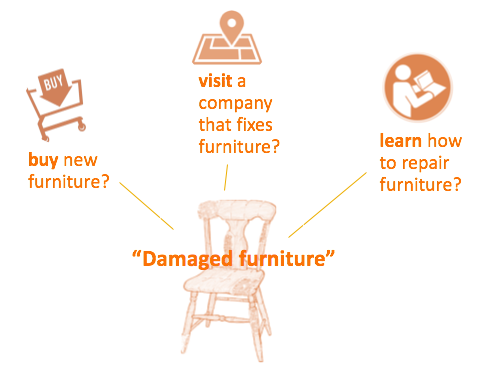
What is Search Intent? What is Search Intent SEO?
Search intent (or keyword intent) is the real meaning of the customer, behind their queries. If SEO is to have higher website ranking on search engine results pages (SERP), search intent SEO is to optimize website structure and content to match the most common user intents associated with your target keywords. As people behave differently based on their intents, understanding and optimizing search intent is crucial for effective digital marketing.
In fact, RankBrain – part of the Google Hummingbird algorithm -“is a work in progress, with the goal of machine learning perfecting Google’s interpretation of searcher intent over time” and “by 2016, Google was applying RankBrain to all queries” according to MOZ. Since the machine learning algorithms are matching signals to intent behind query, so must the SEO does this too.
Benefits of Search Intent SEO
With better intent optimization, more consumers’ intent could be met, which results in more click through rates (CTR), more relevant and qualified traffic to your website as well as more conversion rates of your transactional landing pages.
Additionally, here are some other benefits that make search intent SEO powerful for business growth:
- Reduced bounce rates: when people get what they really want, they will stay on your pages, which is good for your ranking as “low bounce rate was associated with higher Google rankings,” according to Brian Dean of Backlinko.
- More page views: people would be more likely to engage with your website once their intents have been met.
- More exposure: meeting more consumers’ intent means your content is of higher possibility to be selected by Google’s featured snippets (Answer Box or Knowledge Panel). This considerably increases exposure of your pages by displaying them above the first search result on SERP.
- Wider audience: as Google is smart enough to identify multiple queries having the same intent, your intent-optimized pages will be shown to more queries and reach wider audience.
How to Optimize Web Structure for Search Intent?
Speaking broadly, these are three types of search intents:
- Navigational (10% of search volume): where user wants to go to a specific website or find the physical address of a location.
- Informational (80% of search volume): where user wants information about something.
- Transactional (10% of search volume): where user wants to take an action.
Therefore, search intent SEO is to create pages either answering user’s questions or helping them finish the intended transaction.
Informational Intent Optimization
The ultimate goal of your informational pages is to build a trustworthy, authoritative image and reputation among users so that they will come back to you when they want to make a transaction in the future.
Firstly, make sure to incorporate the full question in the most important on-page content:
- Page titles
- HTML header tags
- Descriptions
Then, write your answer directly below the header which contains the question.
When answering “how to” questions, put query in <h1> tag and each step of the process in <h2> tag. Expound on each point in the body content after <h2> tag.
Transactional Intent Optimization
Create landing pages so that customers can make their transaction directly on that page:
- Show consumers how they can convert and what they will get from that.
- Consolidate your landing page by incorporating account creation, newsletter signups, add to cart buttons, etc.
- Keep your conversion process short by asking information only needed for the conversion.
How to Dominate Search Intent SEO by Focusing on Search Intent?
To display best results to meet users’ intent, Google will show content that other users with the same query have found helpful.
So, to figure out the intent of keywords you want to rank for, google it and see the other search results for that query. Then, refine your content to answer that need. There, your search intent SEO is optimized.
Are You Optimized for Search Intent?
If you have not optimized your pages for search intent, it is a good time to start it now. Using tools to run an in-depth SEO audit to identify what content has already matched users’ intent and what potential opportunities exist for polishing your website structure and content.
Do it right and do it right now. With this powerful SEO strategy, you could gain larger audiences, more relevant and qualified traffic, better customer engagement, higher ranking and conversion rates of your website.
Xue Chen
